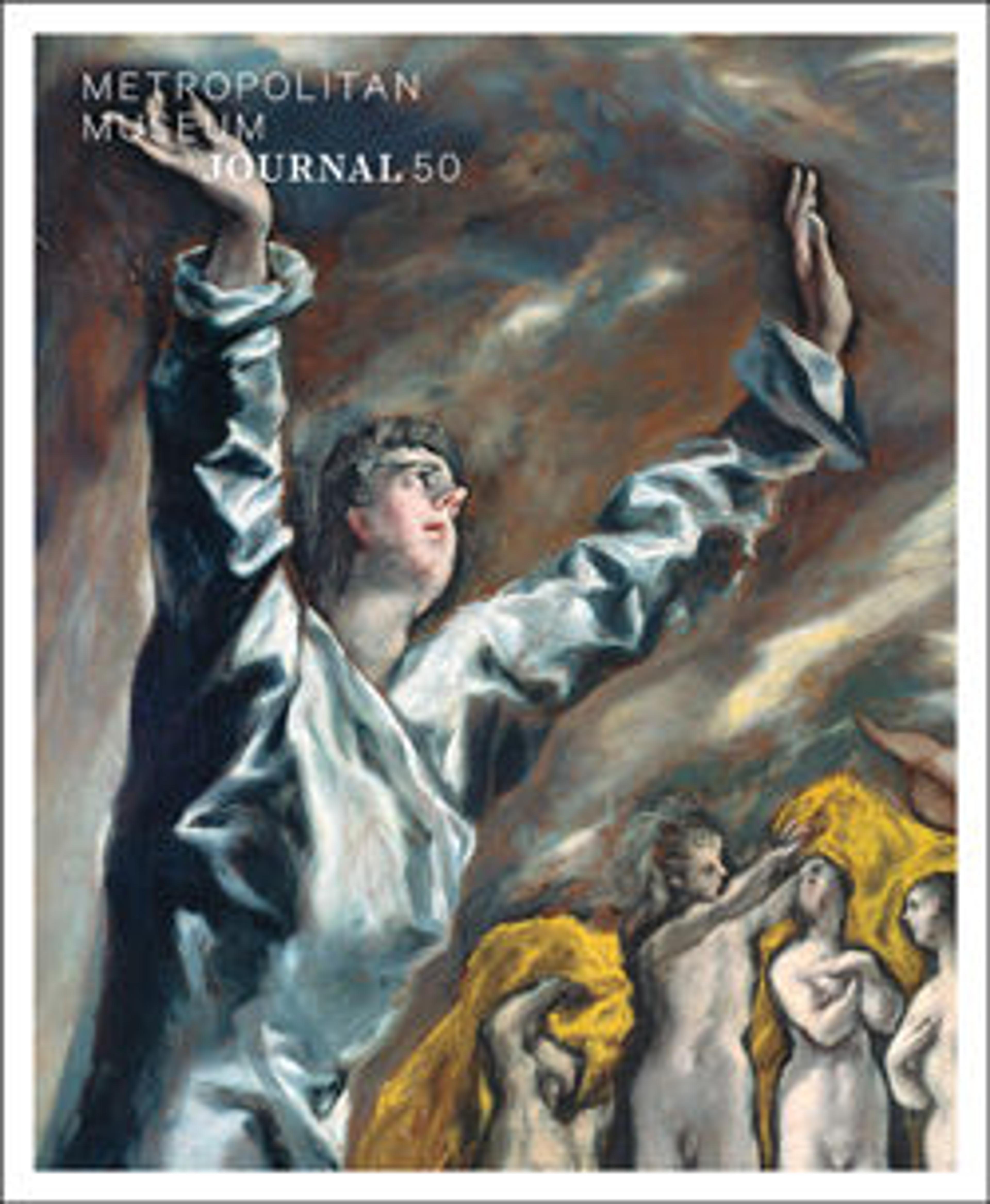Terracotta hydria (water jar)
Three women within a naiskos (shrine) between youths and women.
Under the handles, head of a woman
A recurring question in ancient funerary representations is which figures are alive and which deceased. On this vase, the critical difference between the individuals inside and outside the naiskos is that the ladies inside are painted white. Should they be interpreted as statues, despite their lifelike actions? Or does the white signify a change in substance though not in form brought about by death?
Under the handles, head of a woman
A recurring question in ancient funerary representations is which figures are alive and which deceased. On this vase, the critical difference between the individuals inside and outside the naiskos is that the ladies inside are painted white. Should they be interpreted as statues, despite their lifelike actions? Or does the white signify a change in substance though not in form brought about by death?
Artwork Details
- Title: Terracotta hydria (water jar)
- Artist: Attributed to the APZ Painter
- Period: Late Classical
- Date: ca. 330–300 BCE
- Culture: Greek, South Italian, Campanian
- Medium: Terracotta; red-figure
- Dimensions: H. 27 1/2 in. (69.9 cm)
- Classification: Vases
- Credit Line: Rogers Fund, 1906
- Object Number: 06.1021.227
- Curatorial Department: Greek and Roman Art
More Artwork
Research Resources
The Met provides unparalleled resources for research and welcomes an international community of students and scholars. The Met's Open Access API is where creators and researchers can connect to the The Met collection. Open Access data and public domain images are available for unrestricted commercial and noncommercial use without permission or fee.
To request images under copyright and other restrictions, please use this Image Request form.
Feedback
We continue to research and examine historical and cultural context for objects in The Met collection. If you have comments or questions about this object record, please complete and submit this form. The Museum looks forward to receiving your comments.
